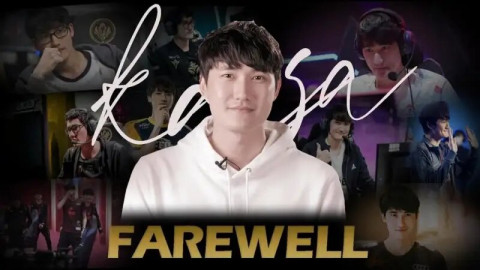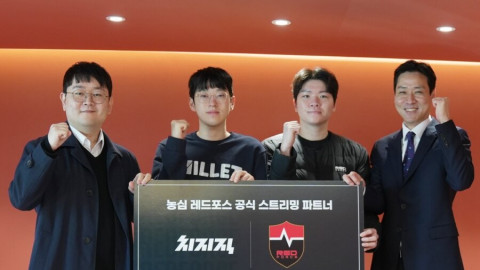Long before Hearthstone was announced in March of 2013, the development team had been making cards to go into the game. In the six-plus years since, thousands upon thousands of cards have been theorycrafted, designed, coded, tested, implemented, played and enjoyed.
Cards with a more basic "pack filler" design may take only a few man-hours to create, design and test before they go live. And, for others, the development cycle can be much longer.
In the most recent Hearthstone card expansion Saviors of Uldum the development team pushed their creative limits to new heights by creating a card that took more man-hours than any other in the game's history, Zephrys the Great. A unique design that combines skill and luck, this genie has captured players interest since the expansion went live at the beginning of August.

Recently, InvenGlobal spoke to Alec Dawson, a Game Designer on the Hearthstone team about what went into Zephrys' design, how he masterfully crafts the "perfect" card and how teamwork really did make the dream work.
When Dawson interviewed to be a member of the Hearthstone team almost two years ago he recalls being asked about a card that was stumping the development team. That card was, in one form or another, Zephrys the Great.
"Zephrys was definitely the card we worked on the most in the history of the game."
The team had tackled ambitious cards such as Yogg-Saron, Hope's End, C'Thun and Shudderwock so what made making Zephrys so difficult? According to Dawson, it was reaching the end goal that was tricky.
There were multiple questions of "What does it mean to get a 'perfect' card, right?" That was a question that went around very early on. In Saviors of Uldum, it was one of the first cards in our sheet. We had a few cards that were in there very early as I think (Sir Finley of the Sands) was another one of them that was there early on. We talked about, "Okay, how do we do this? Do you have to type in the card's name? Do you have to go down multiple Discover paths? What is the actual answer?"Then one day we sat next to our gameplay programming team and we asked them 'Do you think we could program this? Do you think we could do this?" They said, "That is a little crazy but we'll see what we could do."

Behind the scenes, the development team knew Saviors of Uldum had to be the expansion where Zephrys fit the best. Thematically, his genie design meshed well with the rest of the card set. Balance wise, they knew singleton decks were returning and a card of his power would slide in quite well.
Now they just needed to make him work...somehow. What players see when he's played all happens in a few milliseconds but behind the scenes, it took countless man-hours, according to Dawson.
I'm not sure what the exact number would be in terms of the amount of man-hours. I would definitely say that is the most we have spent on one card. This card hit multiple teams. From very early on we had designers working on it then we had gameplay programmers working on it. Our QA team was doing a lot of great work there and seeing, "Okay, here are 1,000 Zephrys choices does anything look weird here? Are there any anomalies here?" Then our effects team put a lot of hard work into it too.
At face value, "Battlecry: If your deck has no duplicates, wish for the perfect card" seems too good to be true and doesn't provide players with much insight into what actually happens next. However, when you get to know Zephrys and how his brain works, players can find optimal ways of using him.
Zephrys looks at the board state information that is known. It doesn't look at the cards you have in hand or what is inside your deck. But it looks at how many cards you have in your hand, what your life total is, what minions are on the board in terms of how many and how much attack they have, whether the opponent has a weapon or not. So it looks at what you need and looking at all that information it looks at the Basic and Classic sets and then puts the best three cards for that situation. It checks if you have lethal so if you have lethal with a certain card it is always going to give you that lethal so that is what it looks at first. Then it looks at, "Do I need a board clear? Do I need a tempo play? Do I need another minion on board?"

▲ According to Zephrys' mind, these are the three perfect cards for this situation.
Zephrys doesn't select from every single card in the Basic and Classic card sets as some are better than others and aren't relevant in most situations. The same rules apply for when and how to play him as well. It's entirely subjective. But you can help him, of course.
Every game is going to be a little bit different in terms of if you're going to play Zephrys on curve or if you're going to wait a little bit longer to get that ultimate value. But one thing I think players have latched onto a little bit is using your mana first as efficiently as possible.
Say my opponent is at 12 (health) and I have a Fireball in my hand. I would want to use my Fireball in hand first and then Zephrys is going to recognize that your opponent is only at 6...now here's another Fireball for you to then throw at their face. Doing your actions first and taking your turn and then guiding Zephyrs into what you might want to be doing later in the turn I think it's something that players have learned. You can touch him a little bit until at that perfect card may be.
Prior to the Saviors of Uldum expansion going live on August 6, the development team was hoping that the community would fall in love with Zephrys as much as they did (considering the amount of time they dedicated to creating him) and that he wouldn't break the game with all of the revolving parts going on behind the scenes when he is played.
There was a moment there where we were like, "Okay, I hope this goes well." We had tested this card so much and we had a really good understanding of what it was going to do.
Once the expansion went live, any worries they had about the card went away.
We're always excited when the community embraces a card like they have with Zephrys. There are a bunch of highlander decks being played on ladder right now.

▲ HSReplay.net has Highlander Hunter as a tier 1 deck at the moment.
As more and more players try and find ways to make Zephrys work for them in their decks, the game's design team used what's unique about Hearthstone to make Zephrys work for them.
I think it was an opportunity for the team to really take advantage of using Hearthstone's nature and digital space. We are using that digital space to give us a really awesome design. We are always looking for opportunities to do that and take advantage of what Hearthstone is as a game. You may not see "wish for two perfect cards" or "get another wish" but you may see cards that explore what it means to be a digital game and the type of card game that Hearthstone is.
-

Tim Rizzo is the editor and a reporter for Inven Global. He joined the company back in 2017.
Sort by:
Comments :0





